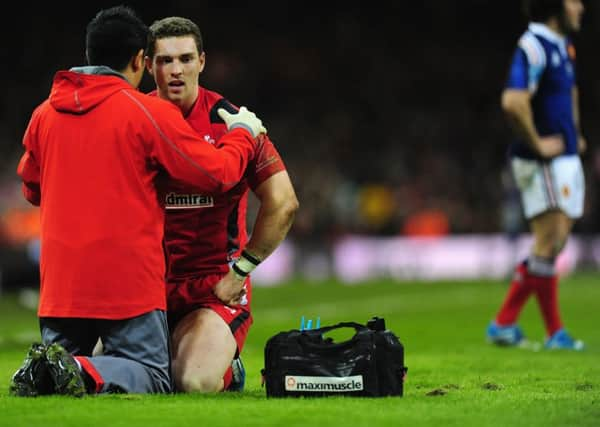Rugby's head injury assessment protocol still contentious


World Rugby put out a self-congratulatory report insisting that the Berlin Consensus proved that they were bang in line with best practice in the face of some evidence to the contrary. There have been several examples of players who have carried on after being obviously concussed in high-profile games – Wales’ George North and Wallaby George Smith just the most glaring examples of obviously concussed players passing the head injury assessment (HIA).
World Rugby’s HIA has been repeatedly condemned as not fit for purpose by various experts in the field including Dr Barry O’Driscoll, who resigned from World Rugby because of it.
Advertisement
Hide AdAdvertisement
Hide AdScotland’s own Dr Willie Stewart, who is on World Rugby’s independent concussion advisory group, recently slated the process by which the treatment of head injuries is reviewed, especially in light of the infamous Conor Murray incident where the Munster scrum-half was asked questions to determine his fitness to play whilst sitting on the pitch. He carried on playing, only to be clocked again, and still passed every HIA.
The Berlin Consensus makes one telling point about in-play diagnosis following a suspected concussion, arguing strongly that sporting bodies need to allow adequate time to make a proper assessment of an athlete and in the appropriate surroundings of a medical room away from the pitch or pitch side.
World Rugby pointed out that the HIA protocols that they have introduced have reduced the number of players who suffered a concussion and continued playing from 56 per cent in 2011/12 to just 8 per cent in the last recorded season, which was 2015/16. A World Rugby spokesman pointed out that no system was perfect and that the HIA was driving cultural change in the right direction.
But the Berlin Consensus also dropped a bombshell about the link between repeated head injuries and the degenerative disease chronic traumatic encephalopathy (CTE) which has similar symptoms to dementia but can only be diagnosed post mortem.
The report stated that the link between CTE and sports-related concussions is inconclusive and that research needs to continue to understand the area better.
This is interesting, not least for the army of NFL lawyers whose client has already agreed to pay out approximately $1 billion to former players who are in danger of developing CTE or a range of other problems related to repeated head traumas. Admittedly that sum is spread over the next 65 years and it includes provision for an eye-watering $112 million set aside to cover the estimated legal fees.
In light of that “inconclusive” statement you have the feeling that $112m won’t cover the lawyers’ coffee bill, although not everyone agrees with the conclusion.
“The evidence, although anecdotal and epidemiological, is so strong that it almost certainly will be proved,” says O’Driscoll in response.
Advertisement
Hide AdAdvertisement
Hide Ad“In the end the statistics are too significant for us not to state that the link is there and declare it. Eventually we will get genetic evidence of who is likely to get this disease and who is not, we have already identified some genes that make a person more prone [to CTE].”
O’Driscoll goes on to point out it would be foolhardy to ignore all the precautions just because a causal link has yet to be proven to what is a very high scientific standard.
World Rugby said: “While the evidence remains inconclusive based on the Berlin statement, World Rugby recognises that a link could be possible and therefore continues to prioritise injury-prevention strategies to further protect all players.”